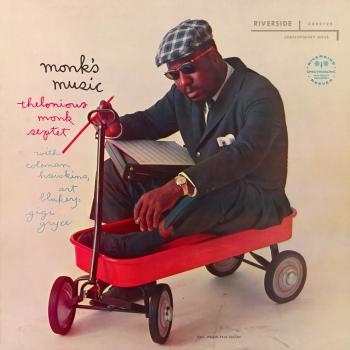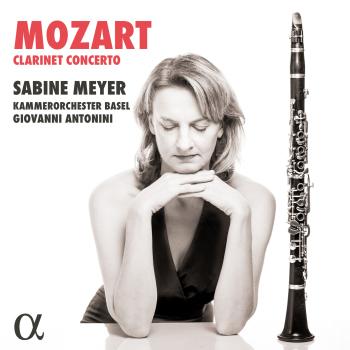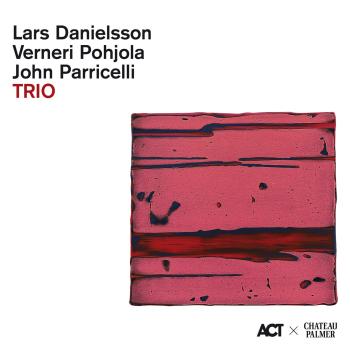
Antonín Dvořák: Symphonies Nos. 5 & 6 Czech Philharmonic Orchestra & Karel Sejna
Album info
Album-Release:
2018
HRA-Release:
29.12.2022
Label: Praga Digitals
Genre: Classical
Subgenre: Orchestral
Artist: Czech Philharmonic Orchestra & Karel Sejna
Composer: Antonin Dvorak (1841-1904)
Album including Album cover Booklet (PDF)
- Antonín Dvořák (1896 - 1982): Symphony No. 5 in F Major, Op. 76, B. 54:
- 1 Dvořák: Symphony No. 5 in F Major, Op. 76, B. 54: I. Allegro ma non troppo 09:07
- 2 Dvořák: Symphony No. 5 in F Major, Op. 76, B. 54: II. Andante con moto 07:46
- 3 Dvořák: Symphony No. 5 in F Major, Op. 76, B. 54: III. Andante con moto, quasi l'istesso tempo - Allegro scherzando 07:26
- 4 Dvořák: Symphony No. 5 in F Major, Op. 76, B. 54: IV. Finale. Allegro molto 12:07
- Symphony No. 6 in D Major, Op. 60, B. 112:
- 5 Dvořák: Symphony No. 6 in D Major, Op. 60, B. 112: I. Allegro non tanto 12:35
- 6 Dvořák: Symphony No. 6 in D Major, Op. 60, B. 112: II. Adagio 10:36
- 7 Dvořák: Symphony No. 6 in D Major, Op. 60, B. 112: III. Scherzo. Furiant - Presto 08:29
- 8 Dvořák: Symphony No. 6 in D Major, Op. 60, B. 112: IV. Finale. Allegro con spirito 09:16
Info for Antonín Dvořák: Symphonies Nos. 5 & 6
Karel Šejna is scarcely known in Europe. A solo double bass player with the Czech Philharmonic, he was selected by his peers in 1950 to succeed Rafael Kubelík who had moved to the West. He follows in the wake of Vacláv Talich and is an exemplary player of Dvořák and Mahler, whom he brilliantly vindicated with his Symphony No.4. This unusual pairing of Dvořák’s symphonies features No.5, a relatively unknown work in the style of a Czech symphonic suite, and No.6, his first in the wake of Beethoven and Brahms which met with immediate success in Prague, Leipzig and London, but less with the Vienna Philharmonic which had, however, commissioned the work.
Czech Philharmonic Orchestra
Karel Šejna, conductor
Please Note: We offer this album in its native sampling rate of 48 kHz, 24-bit. The provided 96 kHz version was up-sampled and offers no audible value!
Karel Šejna
musical studies were at the Prague Conservatory under Professor Černý (double-bass, 1914–20) and later with K. B. Jirák (composition). As a young man he gave several concerts in Egypt, and on his return to Czechoslovakia in 1921 he was appointed the first double-bassist of the Czech Philharmonic Orchestra, and shortly after (on 25 July 1922) also conducted the orchestra at a concert in Žofín Palace in Prague. Some compositions including a song-cycle and a string quartet date from this time.
He began to conduct on recommendation of the principal conductor of the Czech Philharmonic of that time, Václav Talich. Talich gradually entrusted him with more difficult tasks, and later recommended him to the post of conductor of the Czechoslovak Railway Workers Symphony Orchestra (1925–1936). From 1926 to 1938 Šejna worked also as choirmaster of the Hlahol Choir in Vinohrady, travelling with them to Yugoslavia and Vienna. In 1938 he was hired as the conductor of the Czech Philharmonic Orchestra. He conducted hundreds of concerts, notably romantic repertoire, but also the music of 20th century. (He performed the Prague premiere of Janáček's Glagolitic Mass). In 1937-38 Šejna was engaged as guest conductor of the Budapest Philharmonic Orchestra.
After the emigration of Rafael Kubelík, the post-war chief of the orchestra, Šejna was for a short time appointed as the principal conductor of the Czech Philharmonic, touring with the orchestra to East and West Germany and to the UK. He was a noted interpreter of the music of Hector Berlioz, César Franck, Richard Strauss and especially of Gustav Mahler.[1] His last concert with the Czech Philharmonic took place on 11 February 1972, with Mahler's Symphony No. 4.
Booklet for Antonín Dvořák: Symphonies Nos. 5 & 6












